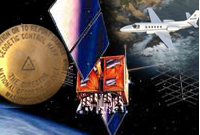Webinar: Best Practices for Real Time GNSS Network Administration
July 31, 2013
2:00 – 5:00 pm EDT
Q&A Document (pdf)
Presentations (click on title to view or download the .ppt files):- Review of RTN Methodologies & Best Practices - N. Weston
- RTN Operations -- Users' and Operators' Perspective – G. Thompson
- RTK Precision vs. Accuracy – M. Armstrong
- Aligning RTNs to the NSRS using OPUS Projects – J. Evjen
- National Spatial Reference System Validation (ORGN Example) – K. Bays, M. Armstrong
There are currently over 100 GNSS Real Time Networks (RTN) operating in the United States, each providing cost-effective spatial referencing to a wide variety of users, and operating with varied formats, procedures and techniques. The National Geodetic Survey (NGS) invites RTN representatives to a three hour webinar to hear NGS’ perspectives and discuss issues of mutual concern.
Agenda as of July 2, 2013
2:00 - 2:10 Introductory Remarks - J. Blackwell / N. Weston
- NGS’ role in RTNs
2:15 - 2:40 Review of RTN Methodologies & Best Practices - N. Weston
- RTN Basics
- RTN Processing
- RTCM Data formats
2:45 - 3:00 RTN Operations -- Users' and Operators' Perspective – G. Thompson
3:00 – 3:30 RTK Precision vs. Accuracy – M. Armstrong
- Testing network correctors (RTK coordinates vs. truth)
- Establishing kinematic control points with RTNs
- Making a RTN/RTK check-in mark
3:30 – 3:40 Break
3:40 – 4:10 Aligning RTNs to the NSRS using OPUS Projects – J. Evjen
- Observation data uploading through the NGS OPUS portal
- Unique map visualization and management aids
- Improved positioning for networks using OPUS Projects
- NGS beta online RTN validation tool demo
4:15 - 4:30 National Spatial Reference System Validation (ORGN Example) – K. Bays, M. Armstrong
- Reference stations in the NSRS - CORS weighting in RTN adjustment
- Guidelines for positioning the Oregon RTN
- Case study: Using OPUS Projects to position the Oregon RTN
4:30 - 4:55 Open Discussion
- Panel discussion of the day’s topics with the attendees
- How can NGS further help RTN administrators
4:55 – 5:00 Webinar Summary and Future Actions Forward – N. Weston


